Organizing a kitchen – 21 tricks organizers use to keep order
These clever ways to organize a kitchen are what professional organizers use to keep order and will help you achieve a neat and tidy space


Lucy Searle
Organizing a kitchen – and keeping the clutter at bay – is an on-going, sometimes daily job, but get it right and you can transform your life, making everything easier to find, more conveniently placed, and tailored to suit your needs perfectly.
Drawers, cabinets and countertops that are pristinely arranged will allow you, and everyone else in your family, to access everything you need efficiently when cooking and entertaining, with so much less mess ensuing.
The aim is to make cooking and spending time in your kitchen more pleasurable, and to show off the wonderful kitchen ideas you have invested in, so next look for clever home organizing ideas for the space you have.
Below, we take you through the steps to organizing a kitchen, perfectly.
Organizing a kitchen
Organizing a kitchen is best done methodically, and it may be best to tackle the job one category or area at a time, organizing a pantry before organizing a refrigerator and so on. Be sure to make laundry room organization a separate project, too, even if they are located near to one another.
Whether you’re the next Marie Kondo or can hardly keep your utensils sorted, owning a perfectly organized kitchen is seriously satisfying. To help you get a grip on your kitchen once and for all, we have gathered kitchen organization ideas to inspire along with advice from the experts.
1. Empty kitchen cabinets and drawers, one by one
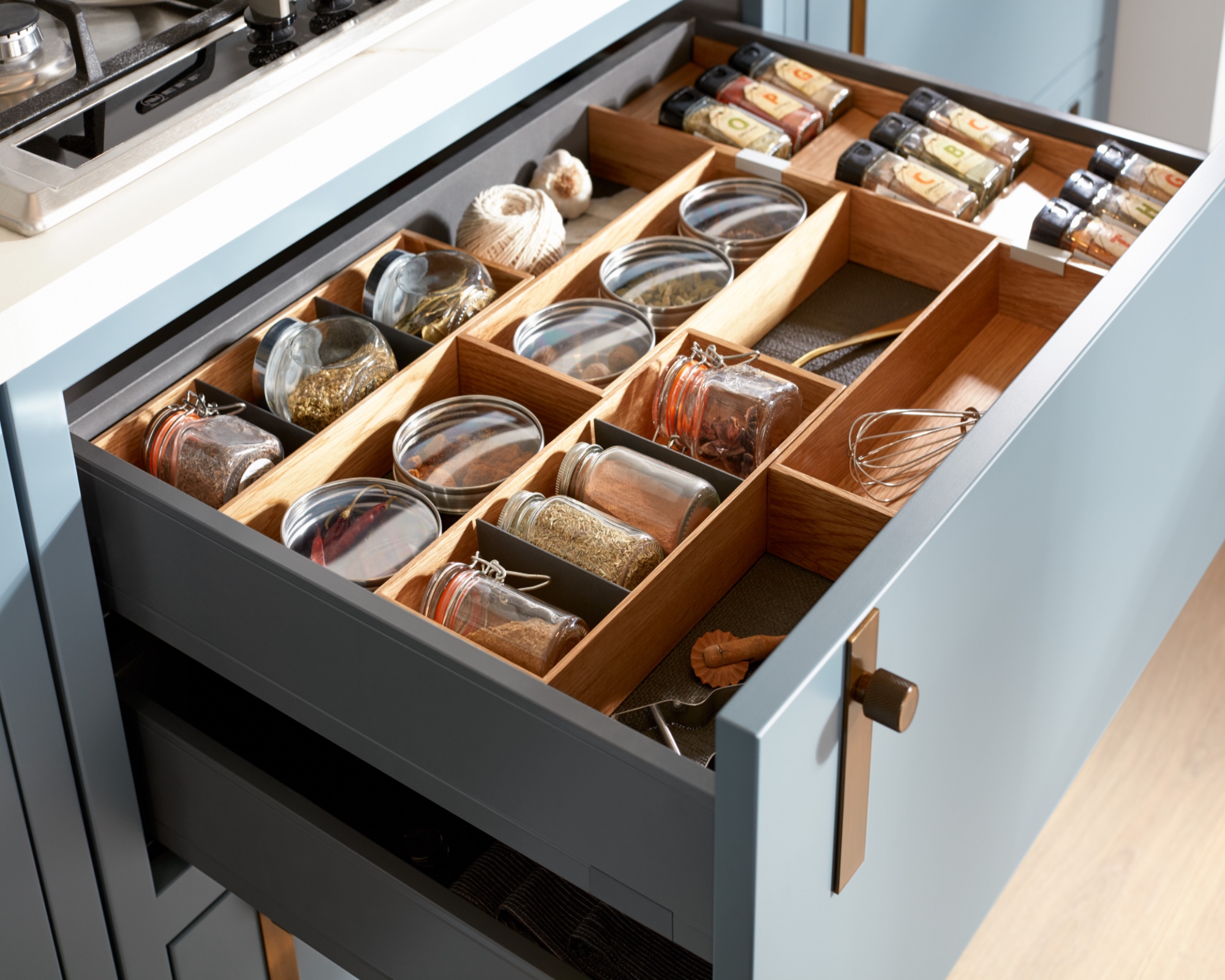
‘A good cook will organize kitchen drawers and organize kitchen cabinets' contents rigidly, making sure everything is easy to see, at a glance, so that ingredients and equipment can be gathered quickly,’ says chef and author Peter Sidwell.
Furthermore, a well-organized kitchen will make putting everything away again just as easy. It’s one thing to organize your kitchen with military precision, but quite another to keep it that way.
However, before you begin emptying all the cabinets and drawers at once, we would advise caution because unless you have a day set aside, this can quickly descend into chaos. Instead, stick to organizing one element or set of elements – perhaps the china cabinet or spice drawer – at a time, to keep the job of organizing a kitchen manageable.
2. Clean and deodorize cabinets and drawers
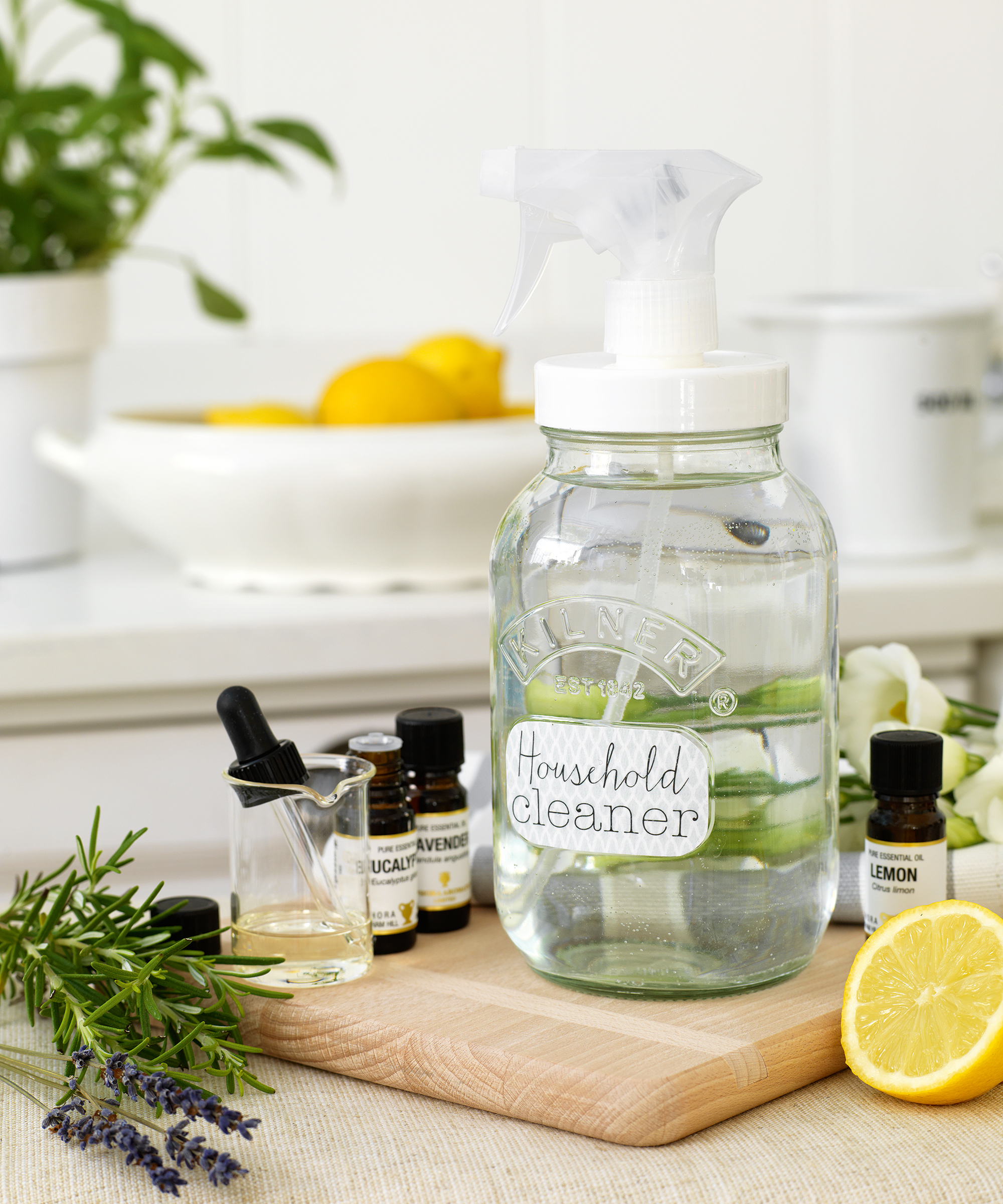
Organizing a kitchen goes hand in hand with cleaning a kitchen. Each time you empty a cabinet or drawer, give it a good clean.
Shelves, especially open shelves, will be likely covered in a sticky dust, the result of cooking grease and household dust mingling; ensure when you clean kitchen cabinets that you tackle the top of them, too.
'Sometimes, kitchen cabinets and drawers have an odor to them; you can freshen them by cleaning with baking soda, cleaning with lemon juice and cleaning with vinegar in combination,' says Lucy Searle, Editor in Chief, Homes & Gardens.
3. Declutter, upcycle and donate
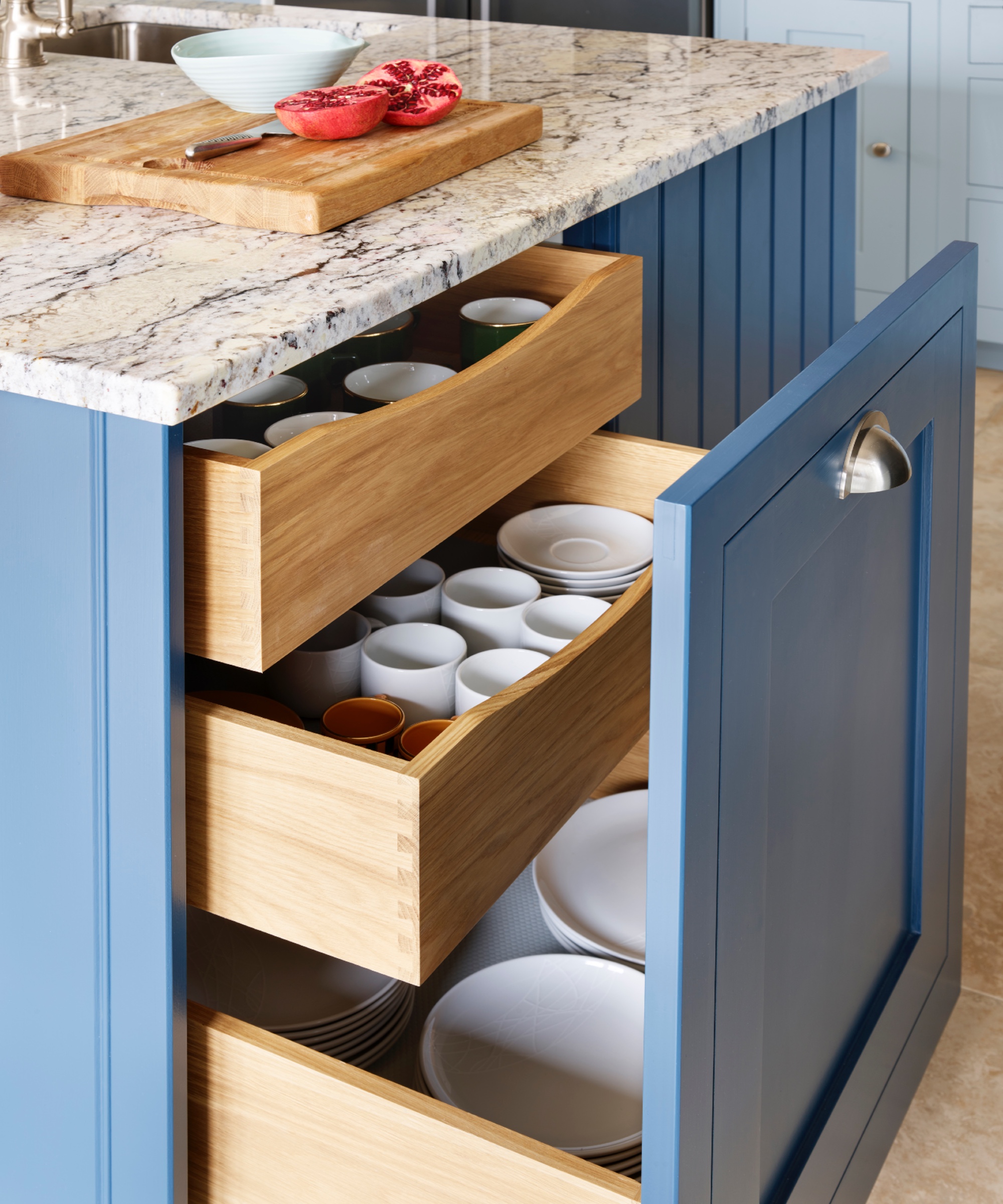
Before you start, it's always best to start with a really good clear out to cut down unnecessary, out of date or unused items, and return any non-kitchen interlopers back to their proper homes.
Decluttering isn't just limited to food, though. Use this as an opportunity to organize your kitchen to the last degree by throwing away, donating or repurposing chipped china, unused appliances you impulse-bought or unwanted gifts that have made their way into your kitchen cabinets. Using the 20/20 rule for decluttering can be useful when deciding whether to keep smaller items that take up a ton of drawer space, and is helpful if you are wondering how to declutter when you are feeling overwhelmed.
4. Make a plan that suits how you use your kitchen
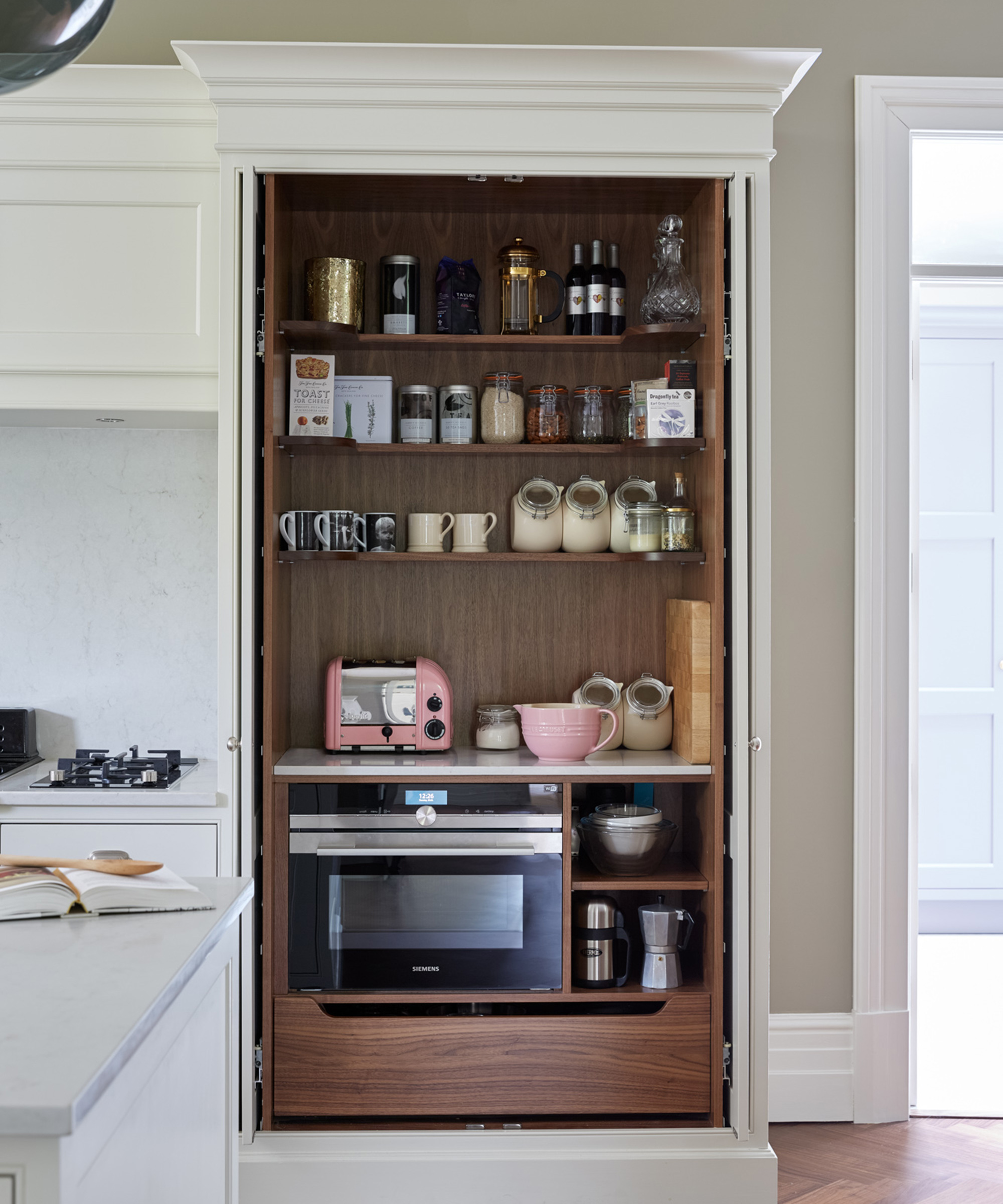
No single kitchen should be organized in exactly the same way. Of course, there are basic ground rules that make sense, all of which we cover below, but you should always pick and choose what you prioritize amongst them in order to organize your kitchen in a way that suits you and your family.
If you are keen cooks in your house, this might mean ensuring the ingredients you use more than once every day – salt, pepper, oils, spices – are left on countertops (no one says organizing a kitchen means it should be a minimalist space). If, on the other hand, you barely cook anything other than breakfast, preferring take outs or microwave meals, you might prefer to prioritize your take out menu drawer or the position of the microwave and breakfast kit over cooks' ingredients.
Additionally, your organizational methods and tools may correspond to the style of kitchen you have. For example, organizing a transitional kitchen will require you to consider different techniques to a modern kitchen, due to the different stylistic choices you will make and depending on the different features they will have.
5. Define your categories
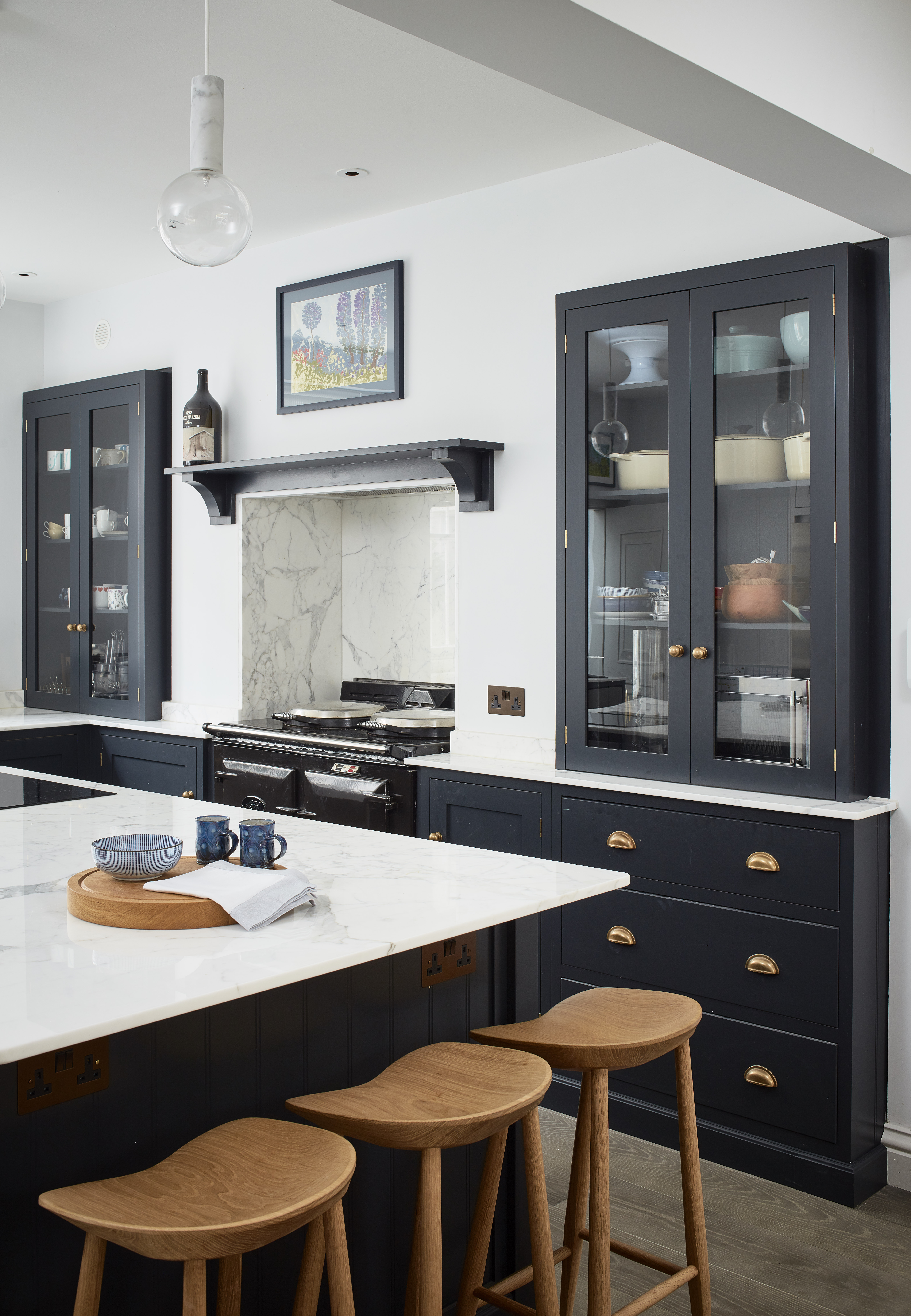
What you need to organize in a kitchen fall into some broad categories. For example:
- Dry foods, canned goods and spices
- Pots, pans, dishes and other cookware
- Baking essentials (for frequent bakers)
- Flatware
- Plates and bowls
- Glasses
- Special occasion china and other items used infrequently
- Dishtowels and cloths
- Kids’ plates, dishes and cups (if applicable)
- Cleaning supplies (if these aren’t stored elsewhere in your home)
To start your organization project, it’s worth writing a list of categories the contents of your kitchen fall into, using our list as a starting point and adding any others that apply to your room to help you find a place in your kitchen open shelving, cabinets and drawers for everything.
6. Create storage zones

To decide where to put things in your kitchen, mentally divide the room into zones. These will help you decide where the different categories of items should be located within which kitchen storage ideas.
Which zones should your kitchen include?
‘Food storage, cleaning, preparation, dishware storage, and cooking zones are the key five,’ says Jake Colwill, manager at Kutchenhaus. ‘Cleaning is the easiest as a dishwasher or sink is a set place for this.
‘To make it easier for the future, reorganize all cupboard and drawers into their set zones, so all food is together, near the fridge or freezer ideally. Make sure all pots and pans are near the oven/microwave and hob and use the remaining area for preparation of food with cutlery and dishes stored in that zone.’
Organizing by zones will make individual items easy to find – and not just by you, as organizer, but by every member of the household.
The other advantage of creating different zones? More than one person can be undertaking a task within the room without unnecessary crisscrossing of paths.
7. Devote one cabinet to items you access daily
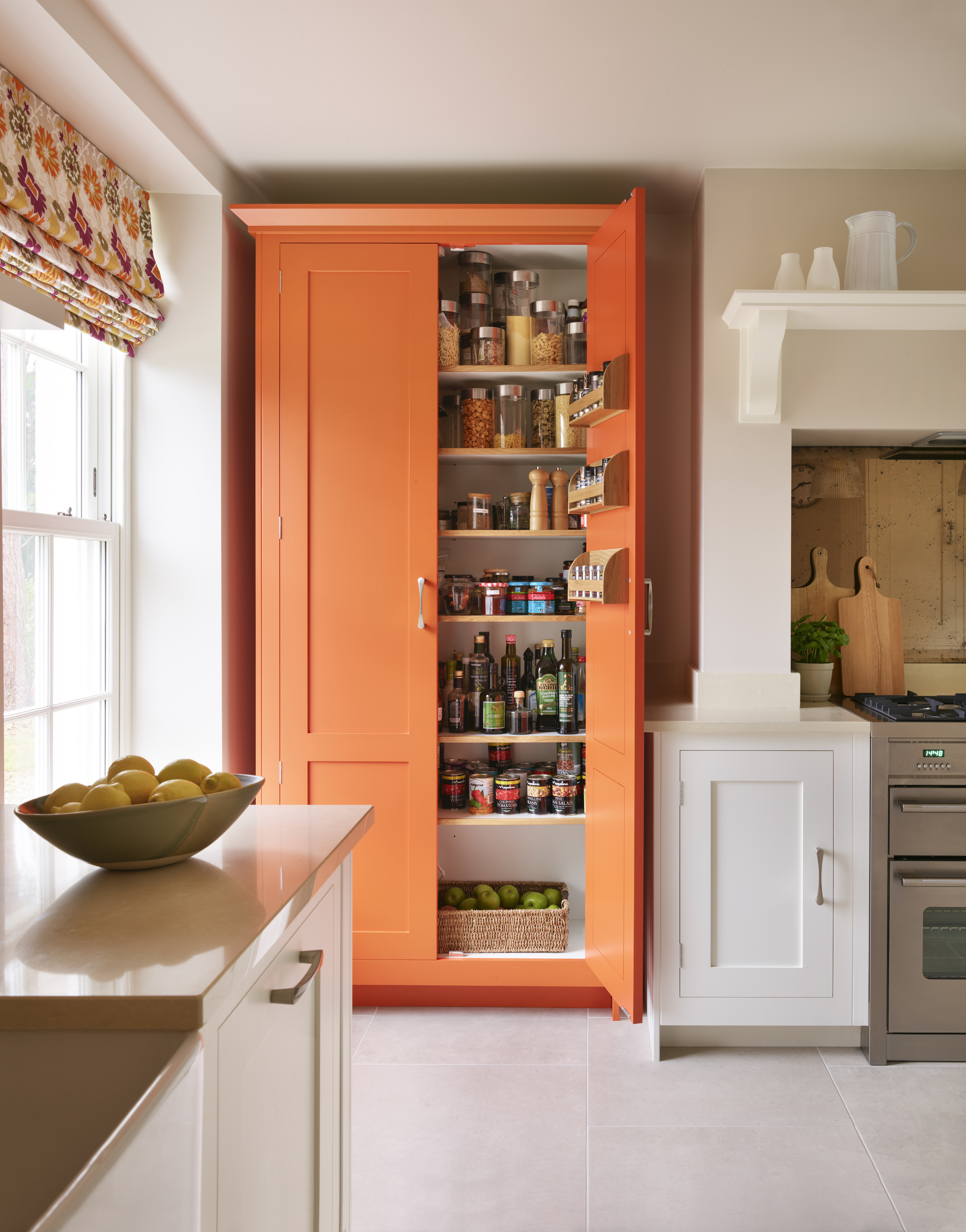
While grouping items is a winning strategy, however, consider also this kitchen cupboard storage idea from Richard Davonport, managing director of Davonport Kitchen & Home.
‘In reality, as homeowners use such a small amount of their kitchen paraphernalia, it can make sense to have an accessible cupboard of items that are used on a daily basis,’ he says. ‘For example, if you’re a couple, having four plates, four mugs, two wine glasses etc in one cupboard right next to the dishwasher can make life really easy.’
To make it easier to access what you need in congested cabinets, a nifty shelf riser can transform a messy cabinet. Head of Solved, Punteha van Terheyden tried and loved the Joseph Joseph pot lid door organizer which stemmed the tsunami of cookware whenever she opened her largest kitchen cabinet.
8. Organize food first
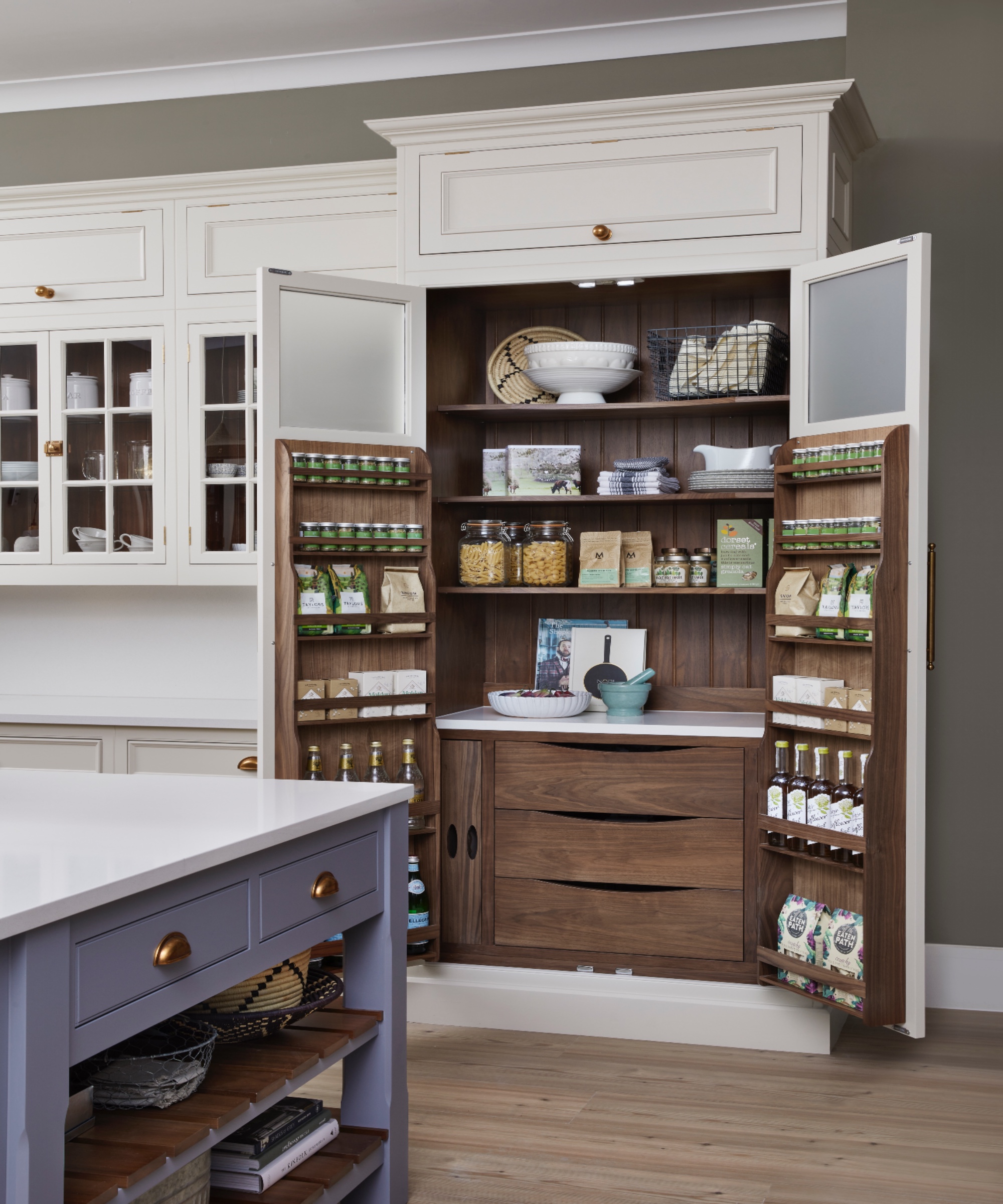
Before you get into organizing the kitchen's functional elements, from china to pots and pans, consider where food that's not kept in the refrigerator will go, and how it's positioned.
Ideally, you might be awash with pantry ideas you can take advantage of for this, whether in a separate room or within the kitchen itself. Or perhaps you are limited to a few cabinets and drawers for dried ingredients?
'You have two choices: put these ingredients in a larder-type cabinet that sits next to the refrigerator, so that all food is in one zone in the kitchen; or, place it very close to where you prep and cook, perhaps within kitchen island storage or near to the oven. Preferably, if you have your kitchen triangle perfectly configured, all these elements will be no more than a couple of paces from each other.'
9. Organize kitchen shelves
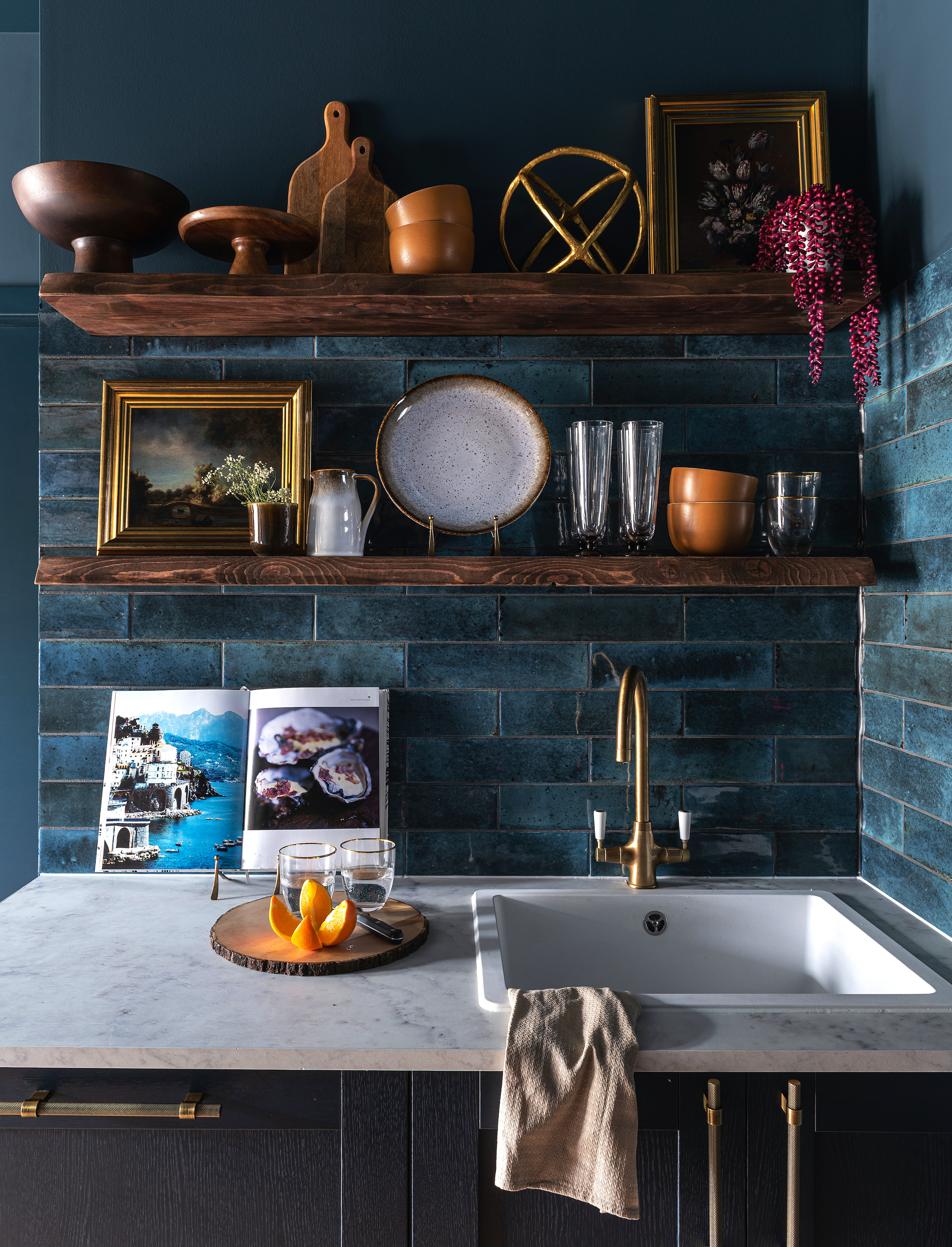
When organizing a kitchen, start with what's on show organizing kitchen countertops as well as the kitchen shelving that can introduce personality and design flair but can quickly descend into chaos. ‘When choosing items for kitchen shelves I tend to pick a color palette that complements either the backsplash or kitchen cabinets and use that color throughout styling the kitchen,’ says interior designer Enass Mahmoud.
‘Remember to organize and style your shelves by grouping your items into clusters of threes or odd numbers and add different heights and sizes in each cluster. This will help give your shelves some balance and help keep them looking tidy,’ adds Enass.
You can use a utensil holder to help keep things organized – and in their place – in your kitchen. Holders, containers and jars can also assist with organizing deep pantry shelves, corralling items for a tidy finish.
10. Organize kitchen drawers
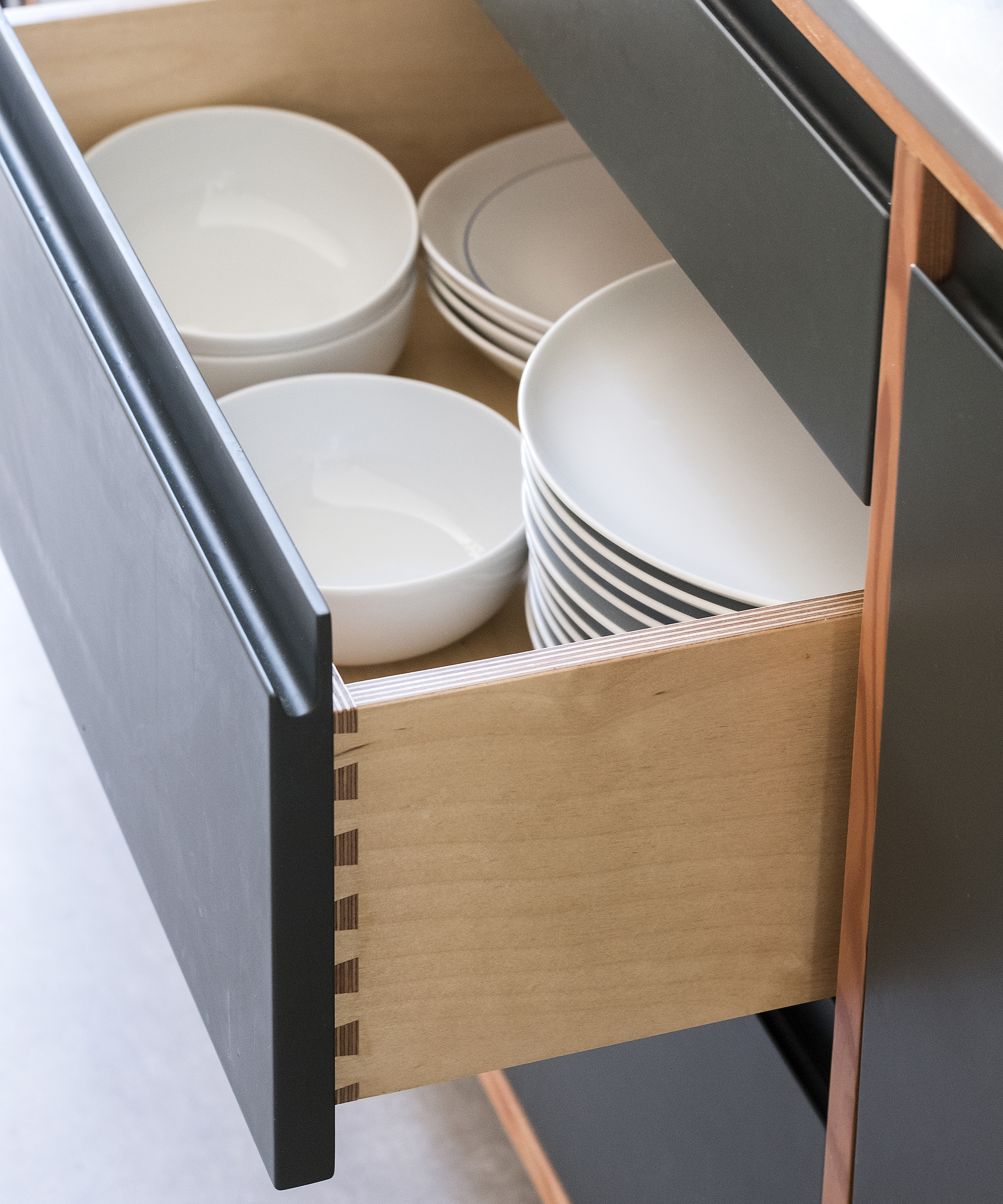
'In my experience, drawers are far more useful in kitchen base units than cabinets,' says Lucy Searle. 'Install drawers, particularly deep ones, and you can not only store just as much as you can in a cabinet, but you can pull them right out to see everything at a glance, reaching whatever you need quickly and effortlessly.
'When you are organizing them, again, consider what your priorities are. Common sense dictates positioning spices, plates or pots and pans (or all three) near the oven or hob, or cutlery near a dining table; equally, top drawers are best reserved for items you use the most often, with those you have to bend to access for items you use less often. However, every one us uses our kitchens and cooks differently, so if you will use a tech drawer more than you will use a spice drawer, give that priority positioning.'
11. Organize kitchen cabinets
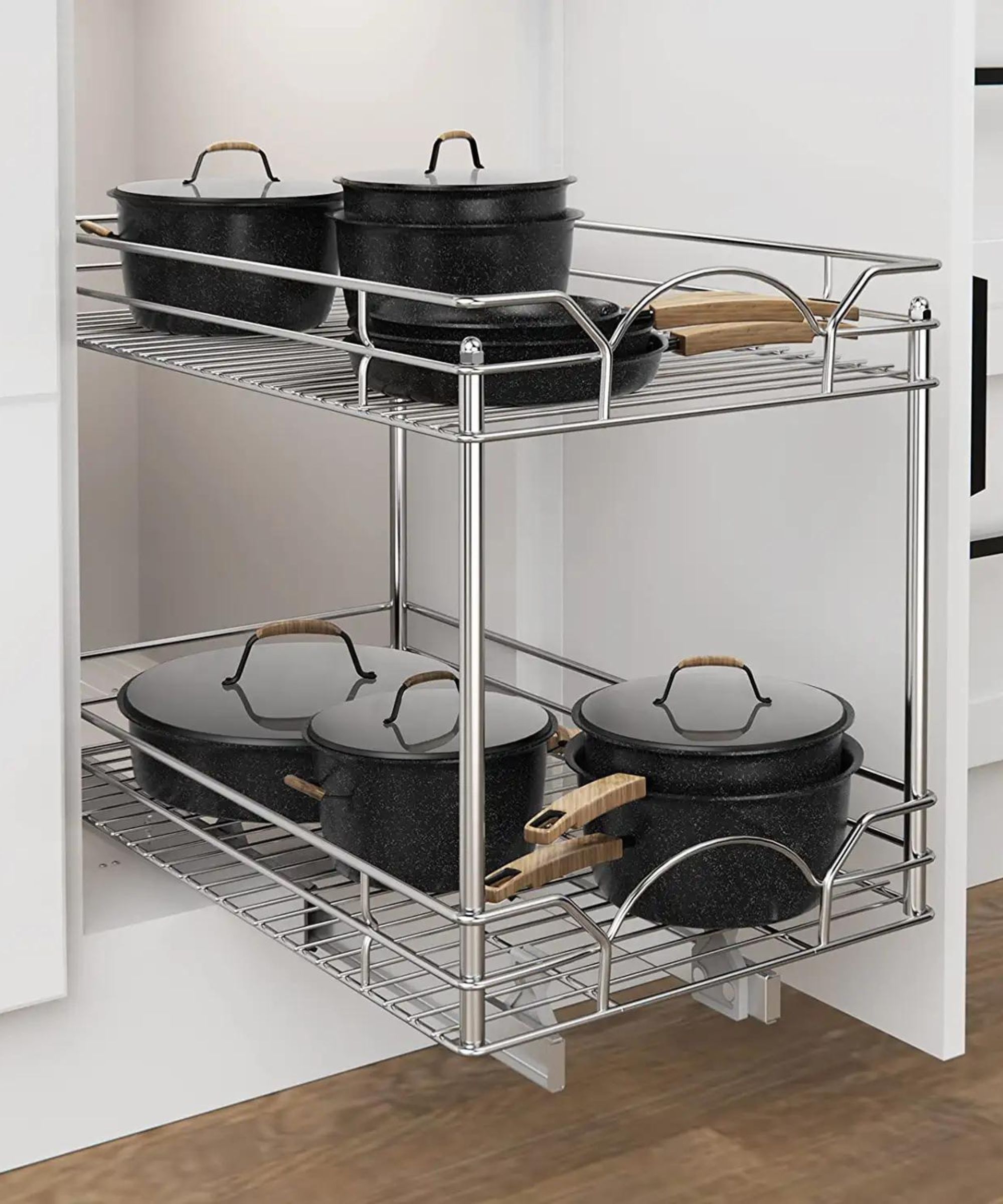
'Kitchen cabinets should be approached in the same way as drawers,' advises Lucy Searle. 'Inevitably, there are shelves within them that are easier to reach than others, so ensure what you use regularly is on shelves at eye-level, with those pieces you use less often consigned to base units first, then top shelves you might need a stool or ladder to access.
'Ideally your kitchen cabinets might have pull-out, larder style drawers, but when that isn't the case – perhaps you've inherited a kitchen or didn't quite get the design of yours perfect (who does?) – cabinet organizers are a great buy. I'm a big fan of these Bamboo stackable cabinet organizers from Amazon because they are sturdy, look good and easy to clean. But if you want a much more dramatic transformation, the RoomTec pull out cabinet organizers, also from Amazon, shown above can transform a difficult-to-reach and organize space.'
12. Include vertical storage
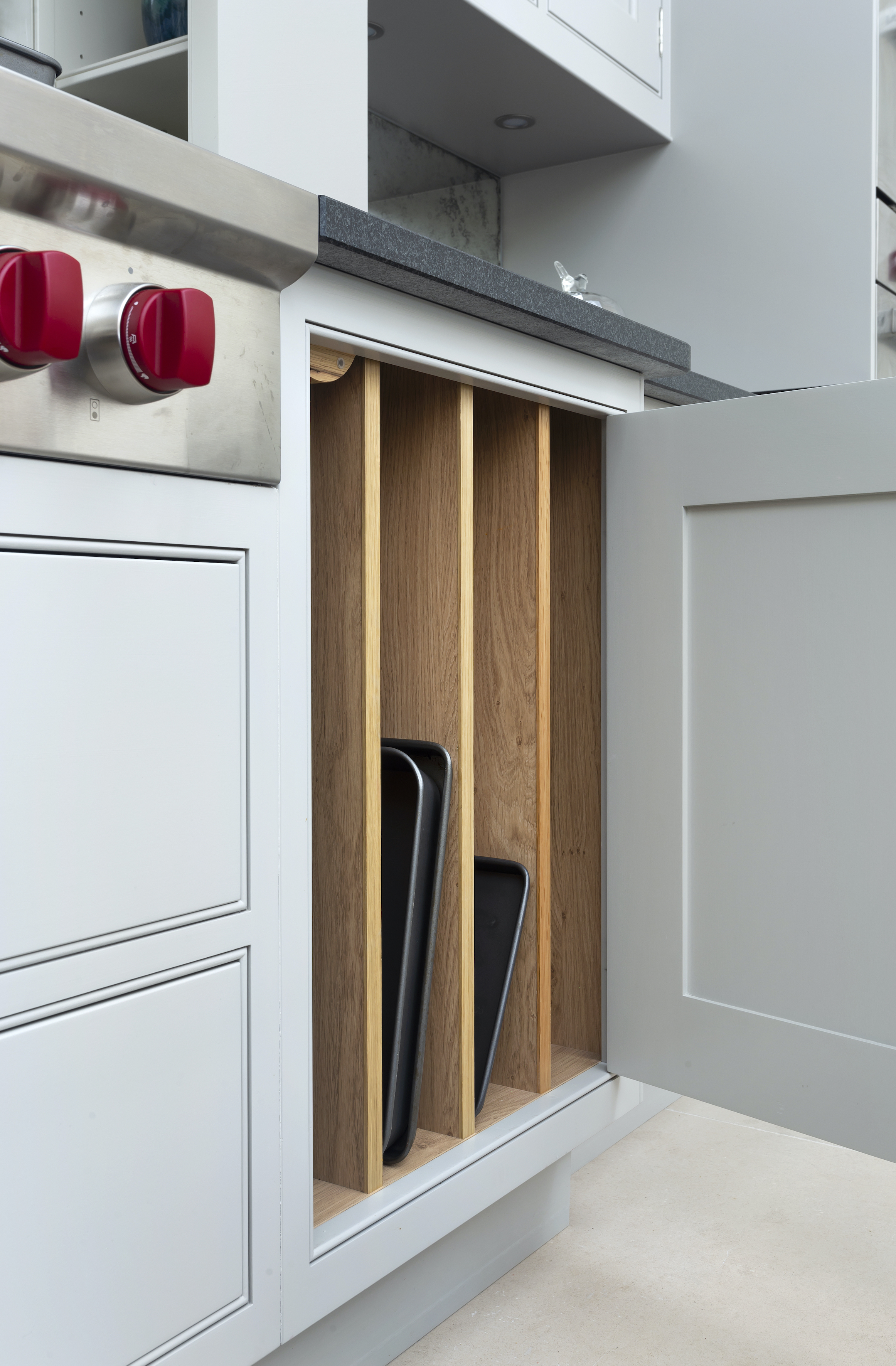
‘We love to provide vertical storage for oven trays and chopping boards. Storing these items vertically rather than horizontally makes them far easier to pull out and you can easily store nearly any size tray or board,’ advises Neil Matthews, director of Lewis Alderson.
‘To organize trays by size, or use, we like to include at least three divides, which creates four slots. They are especially useful for the outsized trays used in large range cookers but I advise all my clients to have one as vertical storage is so multifunctional.’
13. Consider ergonomic efficiency
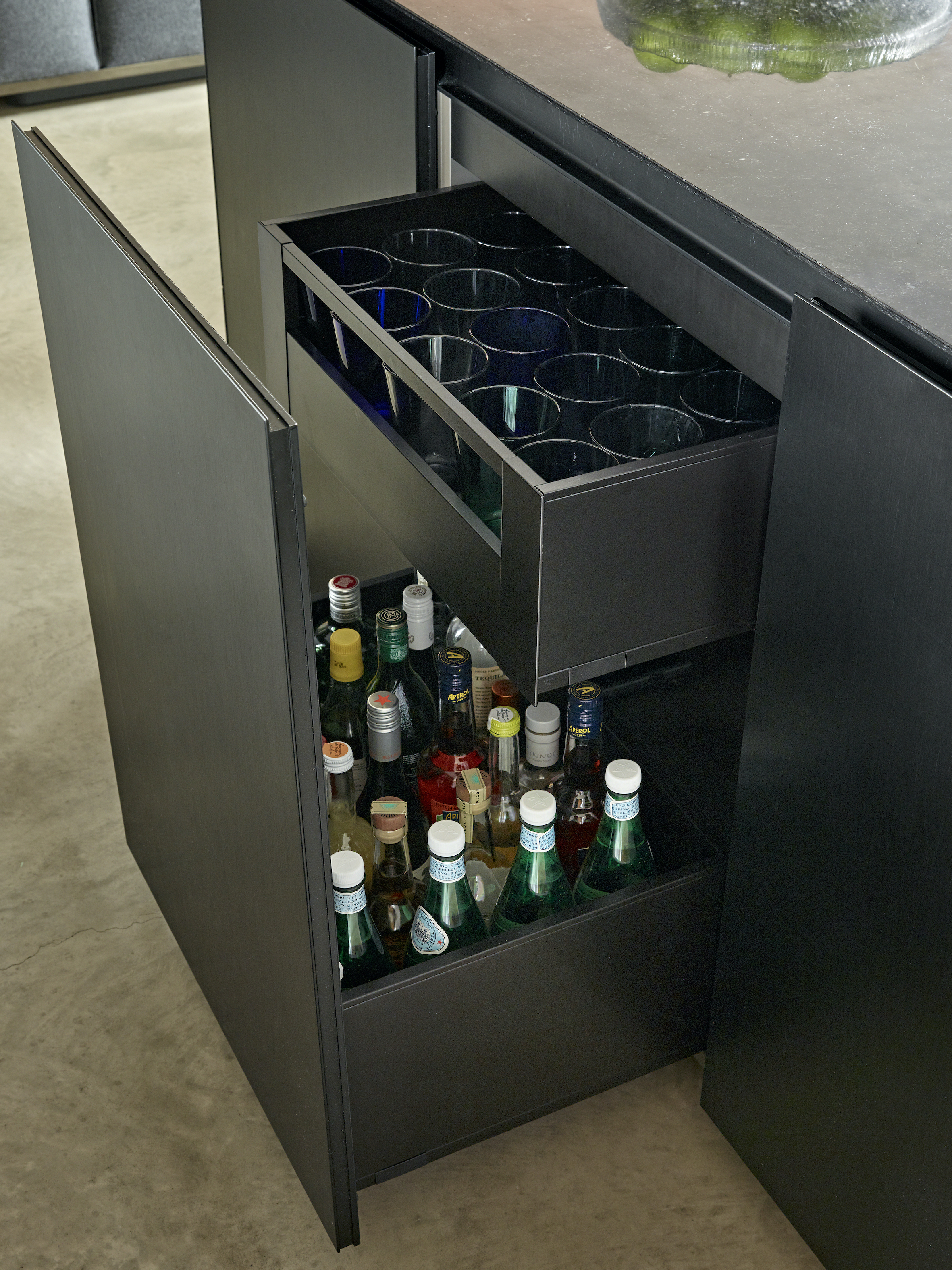
Follow the lead of chef's kitchens, where speed is everything, and arrange your cabinet contents in ‘families’ according to use. For example, locate glassware next to drinks, organize Tupperware used for storage near the refrigerator, crockery between the dining table and dishwasher, and organize pots and pans next to the oven.
‘By grouping items together to create zones – cooking, cleaning, prepping, etc – you will have everything you need close to hand as you move around the kitchen,’ explains Minotticucine London’s head designer Achala Knights. ‘By following these principles of ergonomic economy, your whole kitchen will feel well organized and intuitive to use.’
The same principle of grouping items will also work for tasks such as organizing a chest freezer, making cooking a smoother process.
14. Organize your spices
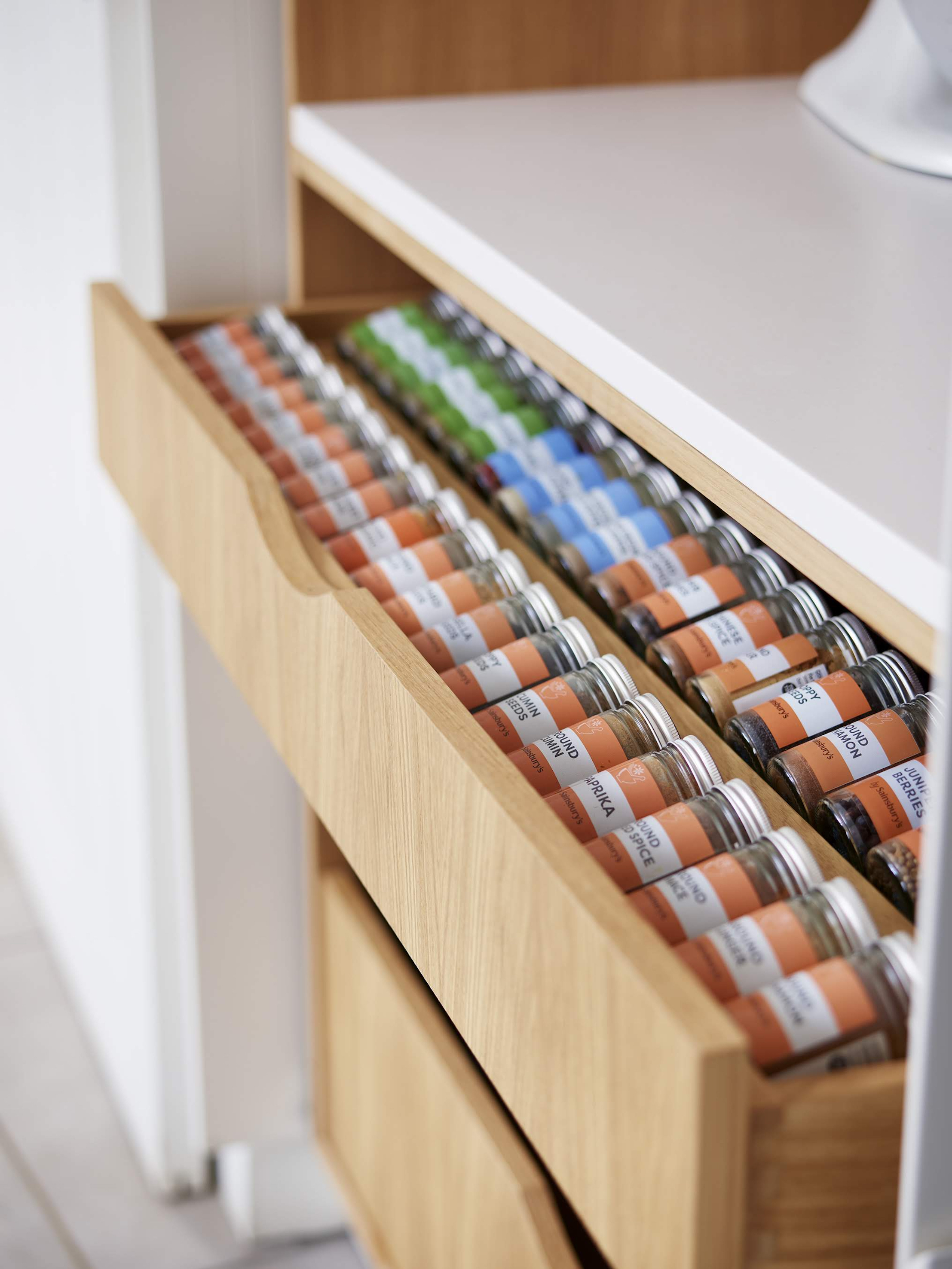
There are several ways of organizing spices to avoid scrabbling around in the back of cabinets, and frequently ending up with multiple purchases or out-of-date herbs. ‘One of the most popular methods is to add a spice rack or two to the back of larder doors, which means the jars sit at eye level with the labels facing out clearly visible,’ says kitchen designer Sam Hart, of Roundhouse.
‘But I also rate using kitchen drawers to take spices , with the jars laid flat to show the labels. You can get a surprising number of jars in a slimline drawer and, placed close to the cooktop, they’ll be easily accessible when cooking.’
The most logical way to curate a herb and spice collection is alphabetically rather than by the style/shape of packaging. If the chaotic look of items bought at different stores upsets your sense of order, do invest in more stylish glass jars – ideally with rubber seals to maintain freshness – and add your own labels.
15. Label everything
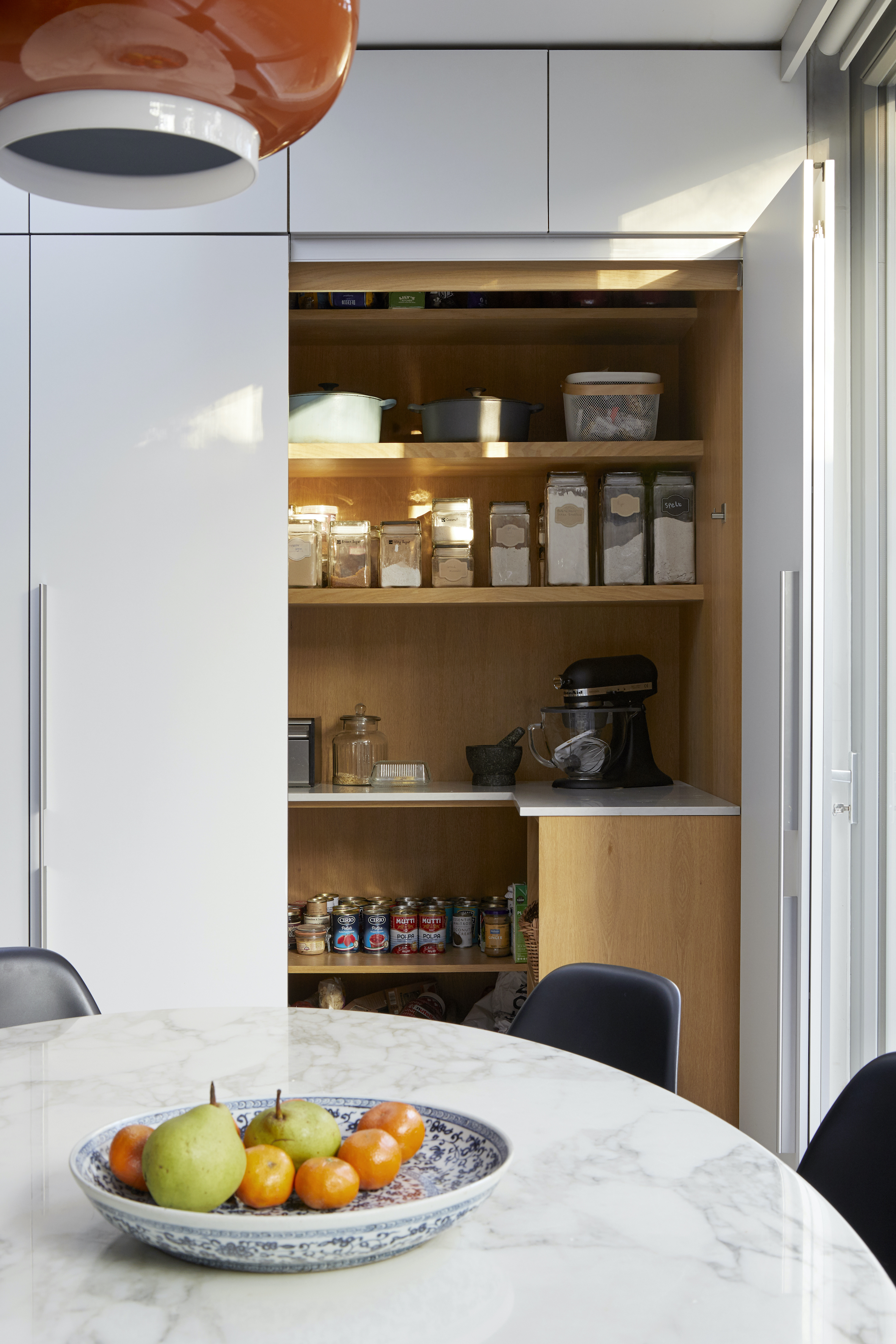
The benefit of a walk-in pantry or larder cupboard is that everything is visible in one glance, and you don’t need to remember which drawer you left the rock salt in. The one negative of having bulk order foodstuffs on display is that not everything comes in beautiful eye-catching packaging.
Happily, there is a huge array of extremely stylish pantry strategies you can mimic for your kitchen organization ideas. What you buy will partly depend on looks but you should also think about how easy your pantry organizers will be to clean, how much you can store inside and the lid design.
Some foods benefit from easy-pour lids, while others are shaped to fit specific items – like spaghetti jars, for example. Glass containers look high-end and are hygienic but won’t suit accident-prone users or children. You can buy pre-printed labels for the most common pantry staples, plain labels for chalk pens or create your own with a label maker, which will also come in handy to execute your utility room organization ideas.
16. Establish your intended use – and stick to it
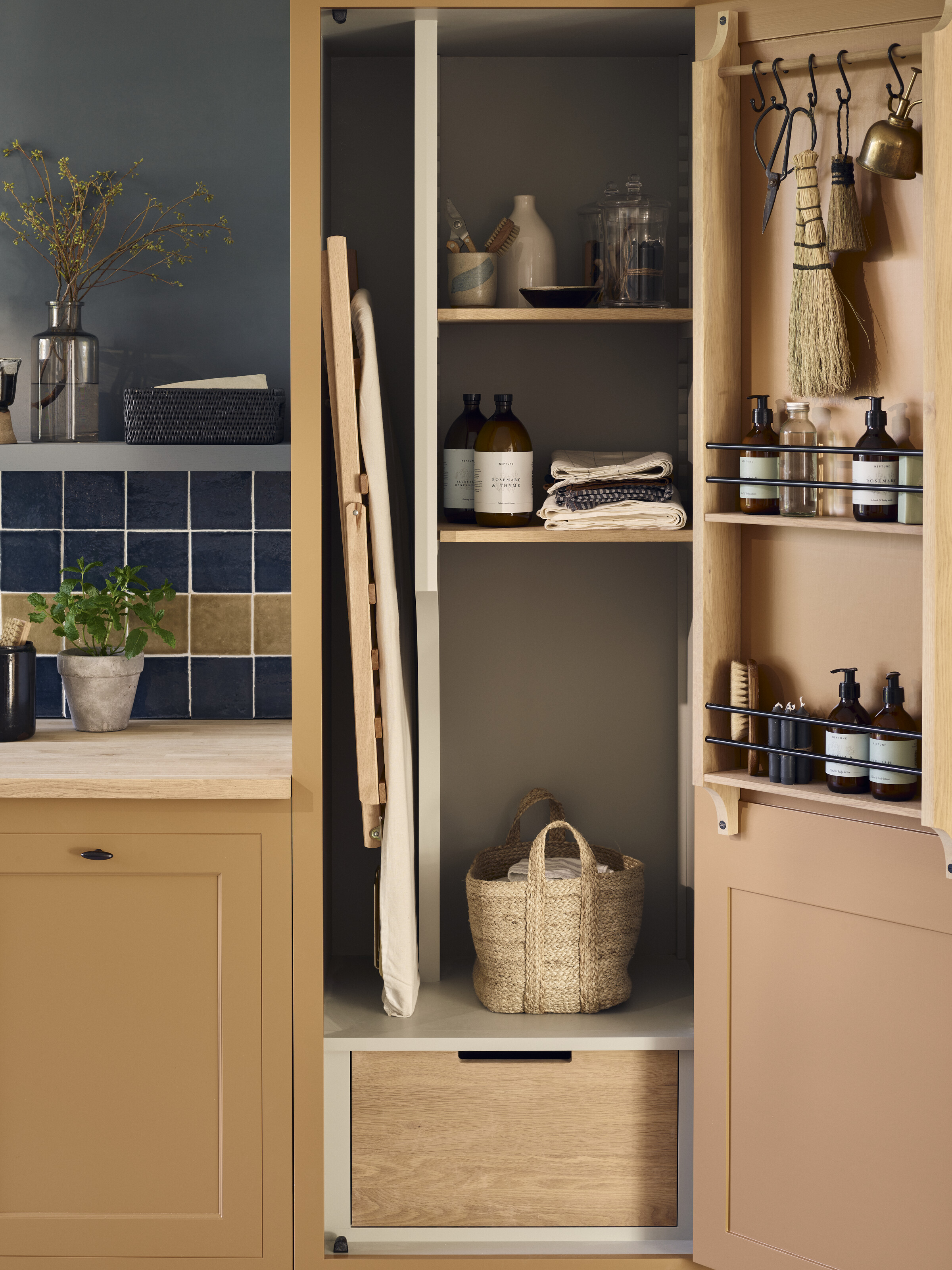
Organizing a kitchen is about assigning use so that cabinets and drawers can realize their full potential and help keep the contents in order.
Creating a linen closet in the kitchen is the next best thing to an actual laundry room. By really paying attention to how everything will fit in, you’ll be able to neatly stow away everything needed to keep your home spick-and-span.
Mix up the horizontal and vertical dividers to accommodate tall items like mops and ironing boards. Include electric outlets if you want to charge a cordless vacuum inside and use hooks to hang dustpan and brushes.
The truly organized might like to add a chalkboard on the interior door to keep an inventory of cleaning products and ensure you never run out of laundry detergent or stain remover.
Try to avoid the temptation to stash anything non-related to the closet’s intended use, even if there’s space to spare. It’s all too easy to end up with a ‘closet of chaos’ instead! And always be mindful not to store what you don’t need.
17. Use kitchen doors
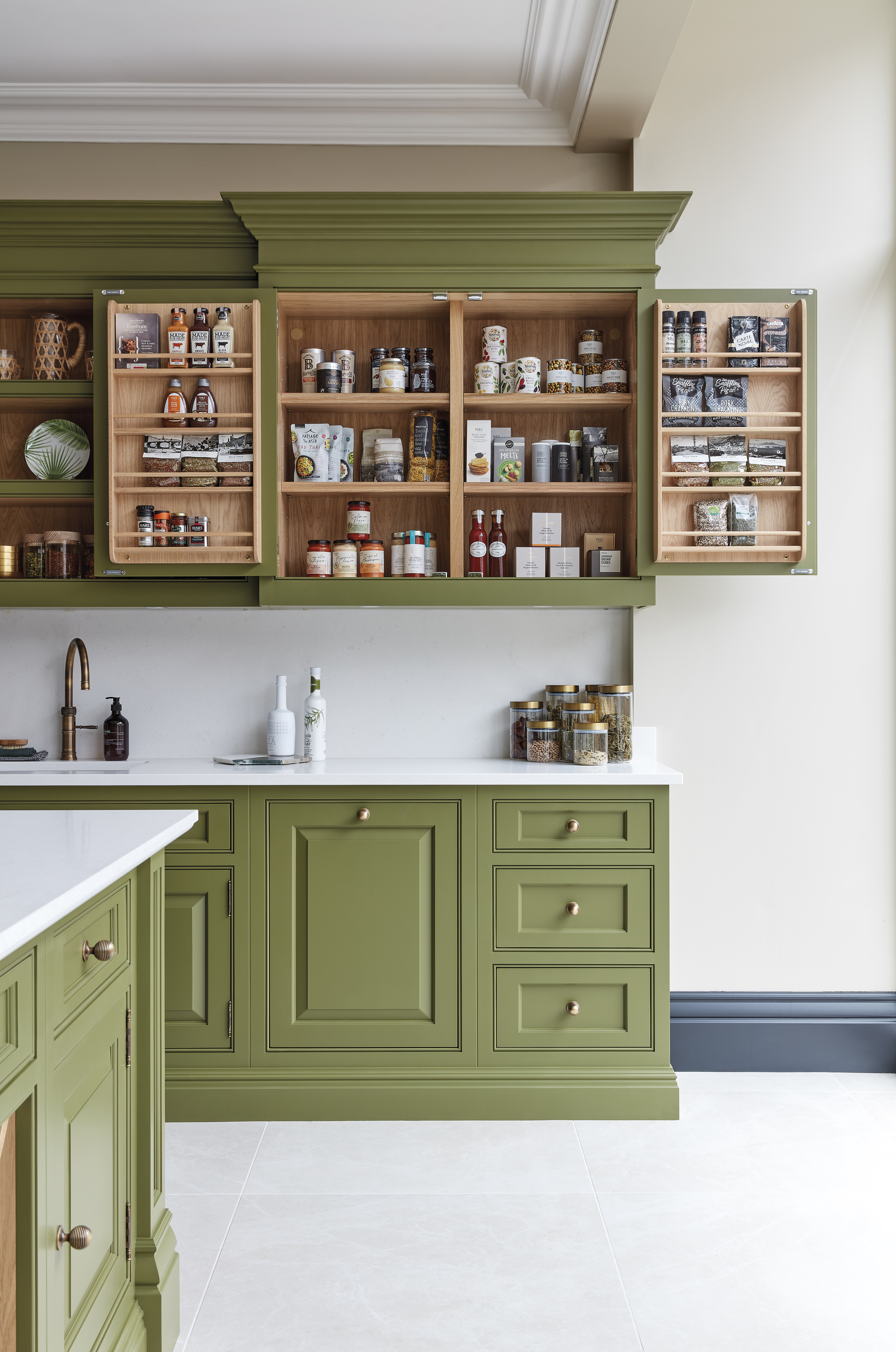
‘If you don’t have room for a large pantry, utilizing your cabinet doors can go a long way towards keeping essential ingredients organized,’ says kitchen designer Tom Howley. ‘Designing them with specific contents in mind can help you make the most of the available space when organizing a kitchen. You can add racks for oils, spices, coffee and even everyday ingredients such as pasta and rice. Creating shelves at varying heights can keep the items you use every day tidy and easy to locate.’
Wooden racks are preferable to metal in terms of reducing the noise of bottles and jars clanking as you open the doors.
Use the same techniques to optimize the space when organizing under the sink but opt for easy-clean racks in case of spills.
18. Hang your stemware
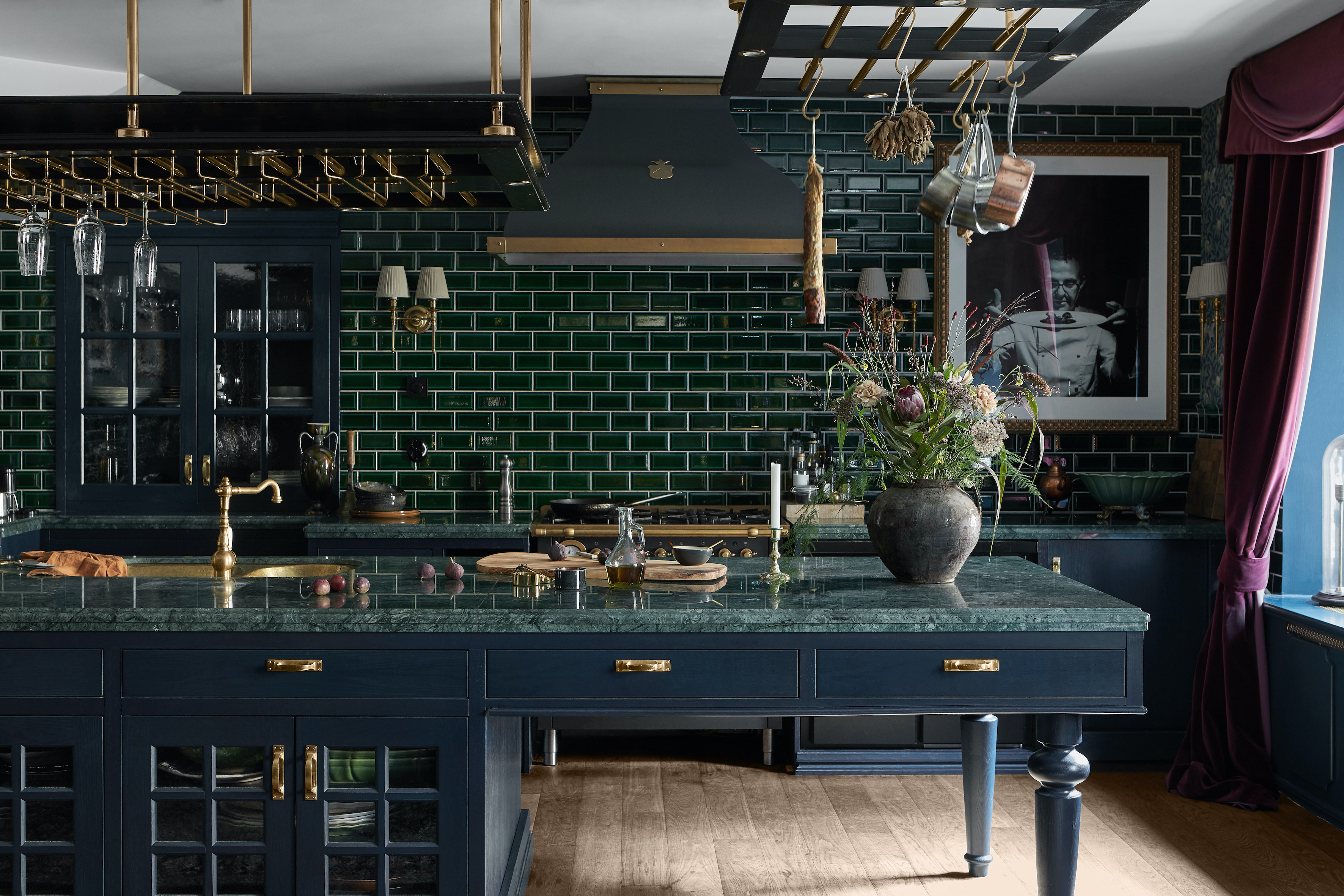
If you love to entertain, you’ll almost certainly own an impressive collection of stemware. Hanging glasses from the ceiling, and pots and pans for that matter, is an effective way to corral them into order, while taking pressure off your cabinet space. Arrange by size and use to make it easy to cater for crowds.
Rows of glistening glassware will double as décor, as this stunning Officine Gullo kitchen designed by Himlekök shows. However, this is not an organizational tip for those who rarely host a crowd – frequent use is the best way to eliminate the need to dust.
Compact kitchen? Follow Marie Kondo’s tips for organizing a small kitchen and make sure all your items still spark joy before dedicating space to them.
19. Keep kitchen tech tidy
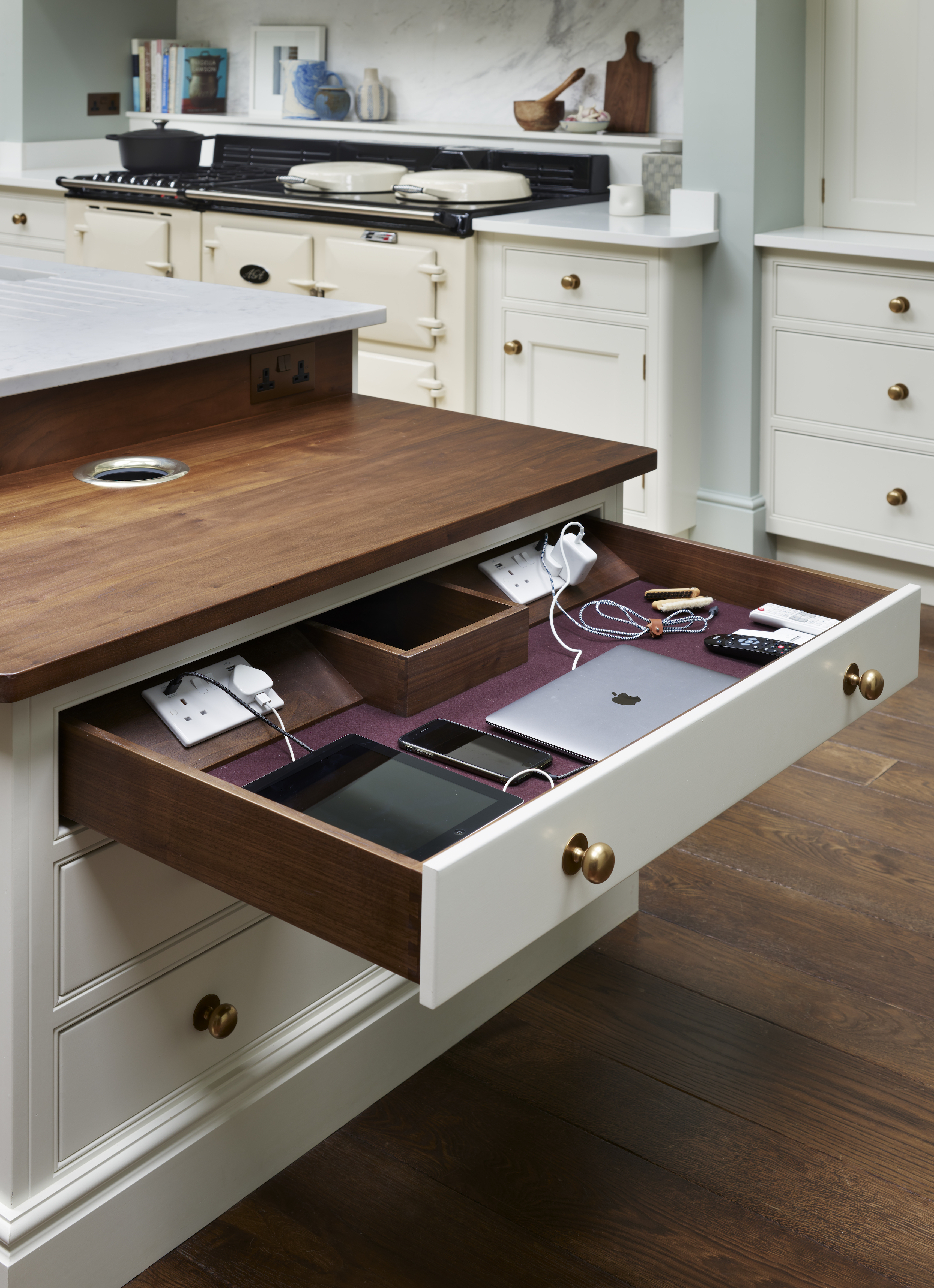
Now we’re spending more time at home, kitchens have become truly multipurpose spaces where we work, relax and entertain. As such, it’s no longer just the kettle and toaster that are to blame for cluttering up countertops and adding visual ‘noise’ in the kitchen.
‘Alongside breakfast cupboards, designed to offer easy access to toasters, juicers and coffee machines that are all plugged in and ready to go, we’re increasingly asked for "tech drawers",’ reports Richard Moore, design director, Martin Moore. ‘These powered-up drawers are extremely handy for those who work from home and also for those with teenagers! They hide away ugly wires and chargers when not in use, keeping counter space clutter-free, as well as storing everything in one neatly organized place.’
If you’re repurposing an existing drawer to tidy chargers, adding kitchen organizers can prevent them becoming tangled.
20. Schedule a regular clear out
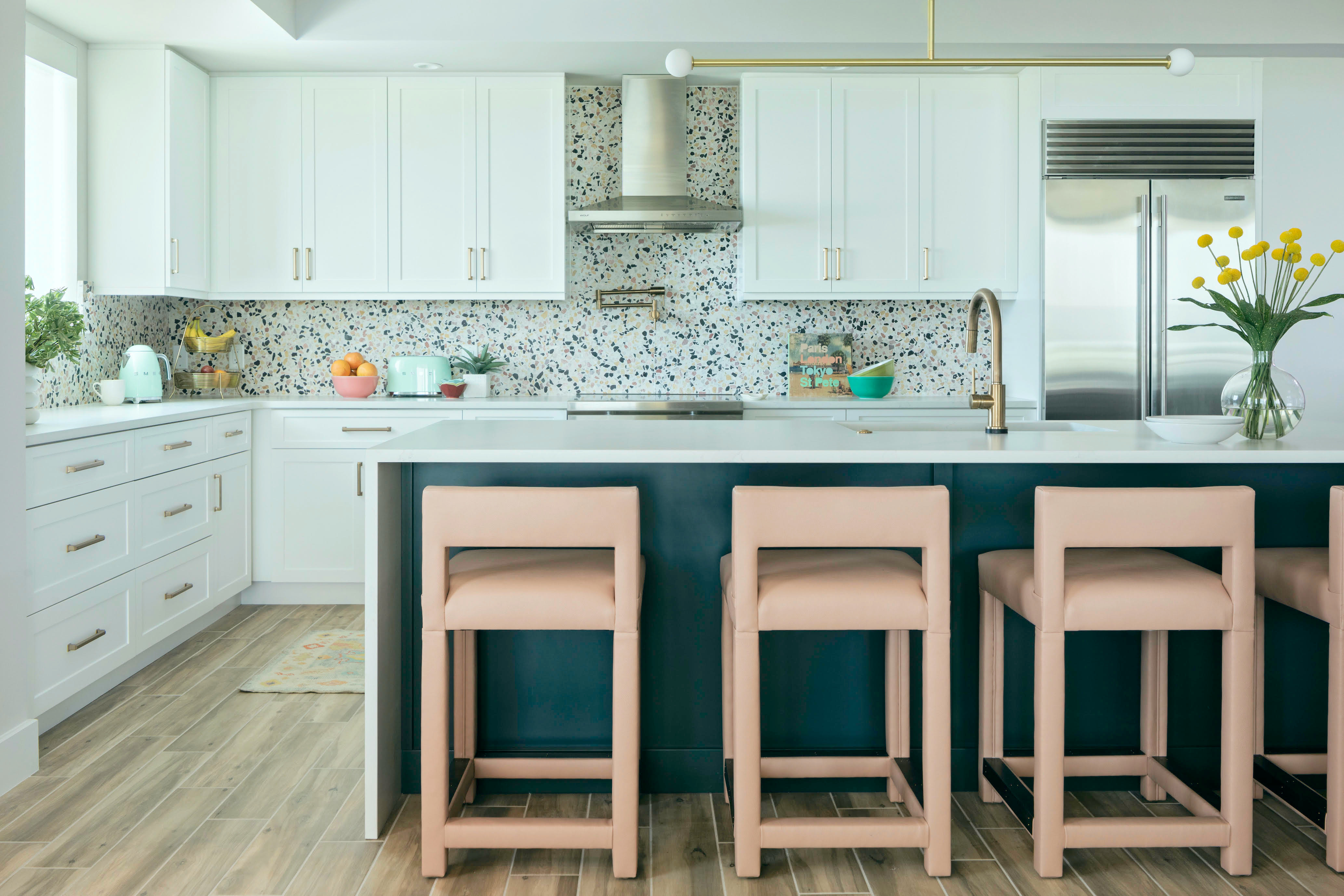
Even with the very best intentions, it’s all too easy for your precisely arranged cabinets and drawers to descend into chaos. We’re looking at you, Tupperware drawer! A regular decluttering will help restore order and, possibly, encourage other family members to be more mindful when tidying up.
Pull everything out, throw away any out of date stock and return errant items to their correct location. Make it an annual event, or commit to clearing out one unit per week or fortnight on a rolling basis to make the chore more manageable.
‘Try to find ways to make cabinet interiors visually pleasing to keep everyone excited and motivated to keep them looking pretty and tidy,’ says interior designer Lisa Gilmore. ‘For example, introduce pretty labels or stylish storage bins and perhaps get creative with color and wallpaper inside larger cabinets to jazz up the space!’
21. Keep wine bottle in optimum condition
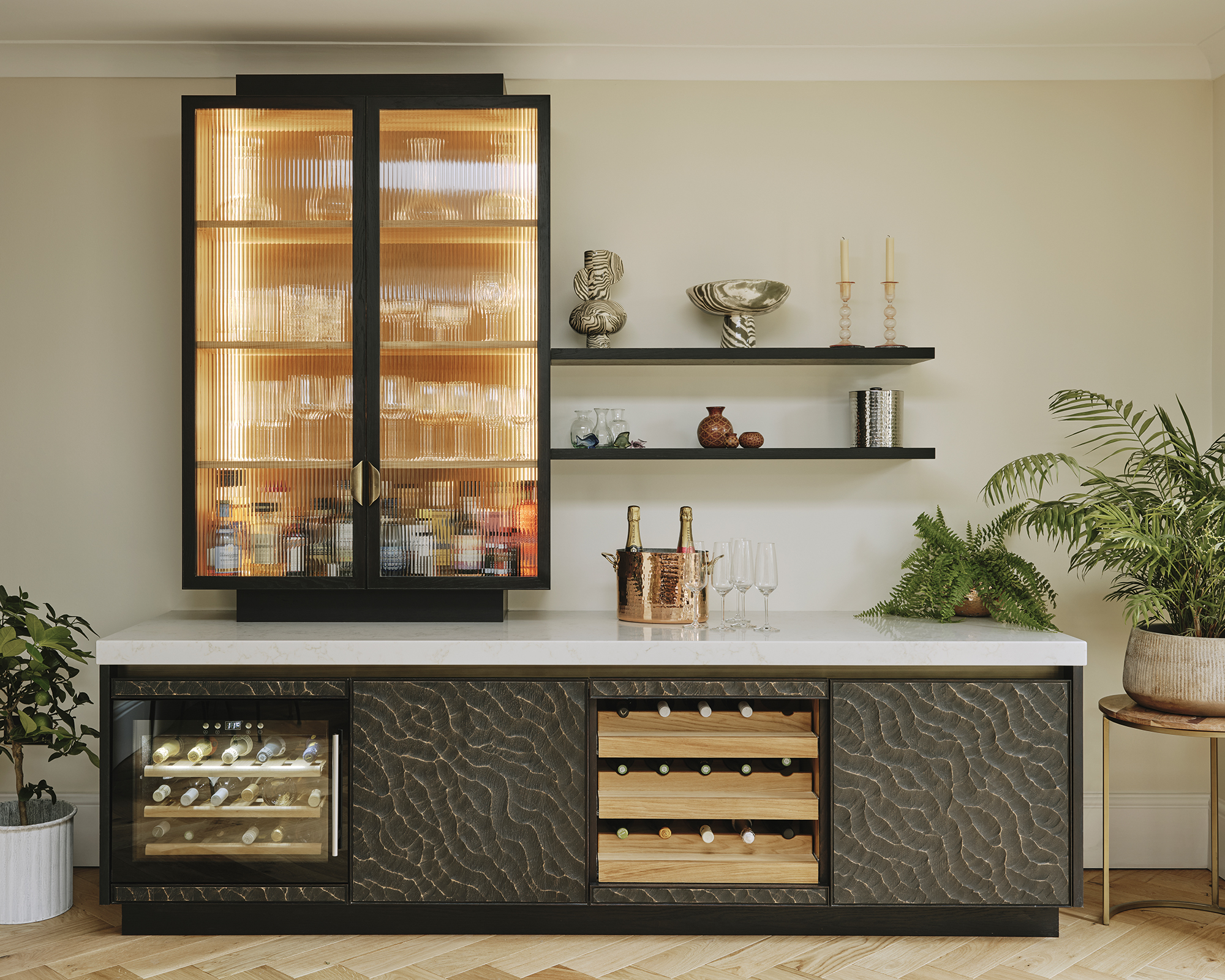
Traditionally, wine is stored in underground cellars, which naturally provide excellent conditions thanks to their constant temperature and humidity, and lack of natural light. Today, however, many of us want to display our wine with bottles ready for drinking near the dining table or kitchen island, so there are a variety of solutions, including temperature-controlled wine rooms and conditioning cabinets, to suit different needs.
‘If you enjoy wine and have sufficient space in your kitchen, a dedicated bar zone can be an attractive addition to the room, so that drinks can be served away from the main cooking area,’ says Charlie Smallbone, founder of Ledbury Studio. ‘A wine cabinet for cooling white wine and a wine rack for storing room temperature reds are useful, as is storage for glassware.’ If you don’t have space for a separate bar, a wine cabinet built under an island, preferably close to bar stools, bar carts, or the dining table so that bottles are in easy reach, makes a practical addition to a sociable kitchen design.'
Remember, for bottles with corks, be sure to store your wine horizontally in a wine rack. Keeping wine on its side helps keep the cork moist. A dried-out cork can cause seepage and premature aging of fine wine.
How do I organize my kitchen like a pro?
Empty cupboards
Before you begin putting items into zones within the kitchen, make like an organization professional, and empty your cupboards out.
Discard out of date food
First of all, check dates on foods so you don’t fall into the trap of putting back those that have passed their use-by dates.
Donate items you won't use again
For non-food items, consider whether you’ve been making room for something you’ll never use again. Bear in mind that occasional use is different: there are some items that are there for the holidays and other special occasions.
But take a lead from Marie Kondo and discard what you won’t use. It can go to a charity, if someone else could find a use for it, and will give you extra space if you are working with small kitchen storage ideas.
Clean before putting back
‘With all the cupboards empty, this is the perfect time to get dust from the surfaces,’ says Jake Colwill, manager at Kutchenhaus. ‘A two-step cleaning process should be employed here by first using a detergent to lift dirt and grime and then using a disinfectant to kill any germs and bacteria. Don’t forget to wipe the contents of what was inside the cupboards before, especially sticky jars.’
What is the most efficient way to organize a kitchen?
The most efficient way to organize a kitchen is to think in zones. There should be three main zones in every kitchen: cooking, prep, and cleaning. If you have the space, it’s also good to have a fourth food storage zone, such as a pantry or larder with refrigerator adjacent so that gathering ingredients or putting away groceries is a one-stop trip.
Establishing zones makes it easy to organize the kitchen according to use. For example, the cabinets around the cleaning zone – the sink and dishwasher – will host cleaning products, kitchen towels and the general waste bin. The cabinets and drawers around the ovens and hob should contain pots and pans, bakeware, herbs and spices and oils. Finally, the prep space should have chopping boards, the knife block/drawer and food waste bin within easy reach. ‘To make the cooking process seamless, every item should have a purpose and a place – you should be able to reach whatever you need almost without thinking about it so that you can focus on cooking,’ advises professional chef Galton Blackiston.
How do I organize my kitchen clutter?
Start by assessing the permanent fixtures on your counters and consider if any can be located elsewhere without making life harder. This is particularly crucial if you’re searching for organization ideas for small kitchens that lack countertop space.
Think, too, about frequency of use. A food mixer you only use once a month can be stored in a cabinet, or even in the pantry if storage is tight. A toaster you use every day needs to be plugged in, but this can be behind closed doors or tambor-style shutters.
Switching the kettle for a boiling water tap will remove one appliance from your counters, which can make a big difference in a small kitchen. Can items like tea and coffee caddies go in the cabinet above, or on a hanging system attached to the backsplash? Switch a counter knife block for a flat in-drawer block, and also reduce the number of oils and seasonings next to the hob. Decant oils into stylish bottles if you’re leaving them on show.
Tackling the non-permanent detritus that builds up during the day/week is more of an on-going commitment. Try to clear down at the end of each day and ask family members to take responsibility for their own mess. Doing it for them is quicker but it won’t reduce repeat offending. It helps if there is a place, perhaps nearer the front door, for post, keys, home study books and so on, so that counters don’t end up a natural dumping ground.
Sign up to the Homes & Gardens newsletter
Design expertise in your inbox – from inspiring decorating ideas and beautiful celebrity homes to practical gardening advice and shopping round-ups.
Linda graduated from university with a First in Journalism, Film and Broadcasting. Her career began on a trade title for the kitchen and bathroom industry, and she has worked for Homes & Gardens, and sister-brands Livingetc, Country Homes & Interiors and Ideal Home, since 2006, covering interiors topics, though kitchens and bathrooms are her specialism.
- Lucy SearleGlobal Editor in Chief
-
 6 things you should never throw in the trash – and what to do for safe disposal instead
6 things you should never throw in the trash – and what to do for safe disposal insteadFrom batteries to space heaters, experts reveal what not to throw
By Andy van Terheyden Published
-
 Worst-smelling plants to avoid – experts reveal 5 pungent species and suggest perfumed options to grow instead
Worst-smelling plants to avoid – experts reveal 5 pungent species and suggest perfumed options to grow insteadThese are some of the worst-smelling plants that can cause quite a stink
By Thomas Rutter Published